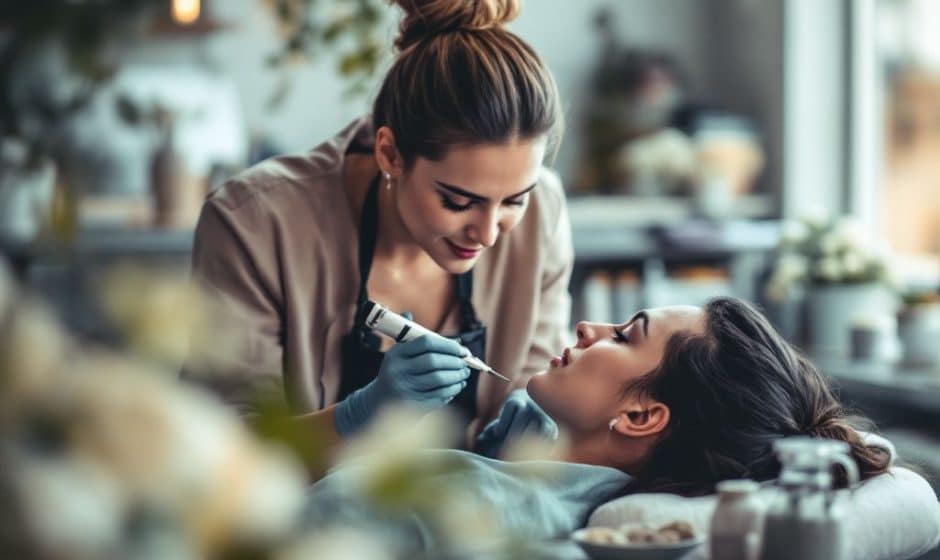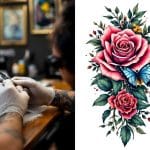Ever walked into a piercing studio, smelled those alluring scents of disinfectants mixed with that slight metallic tang, and thought about the health of the person holding the needle? Yeah, it’s not something most of us dwell on. But being a piercing artist isn’t just about crafting stunning body art; it’s a profession that demands a steady hand, creativity, and most crucially, good health. In this Beauty Guide, let’s dig into the gritty yet fascinating world of piercing artist health and how hormone regulation plays a surprising role.
The Life of a Piercing Artist
Before we jump into the science-y stuff, let’s paint a picture of the day-to-day hustle of a body art professional. It’s not just about leaning over clients and creating small masterpiece moments on their skin. Sure, that’s a big part of the job. But think about the back end: the meticulous sterilization process, handling multiple customers with unique needs, balancing odd hours to suit clients’ busy schedules, and standing for long stints. It’s a physically and mentally demanding gig.
Now, here comes the twist — all these demands can impact the health of the piercing artist, not unlike how your desk job might leave you hunched. These challenges require proactive care strategies to stay on top of their health game. Hormone regulation ends up playing a more significant role than one might expect. Stick with me here; it’ll make sense soon.
Why Hormone Regulation Matters
Things can get chaotic in your body when hormones aren’t playing nice. For piercing artists, hormone regulation affects energy levels, mood, concentration—critical elements in ensuring precision in their work. Hormones are these little messengers darting around your body controlling everything from stress responses to how sleepy you feel after lunch.
**So, why should a piercing artist care?** Simple. Keeping hormones in check can mean the difference between cruising through a day full of back-to-back appointments and crashing halfway through with exhaustion, or worse, making a mistake on a piercing placement.
Common Culprits of Hormone Imbalance
Now let’s peek into some common felons that could be doubling as hormone disruptors and messing with piercer health:
- Stress: Long working hours and the precision needed to pierce perfectly can send stress hormones like cortisol soaring. And if cortisol lounges around too long, it invites its buddies tension and anxiety.
- Food Choices: An artist powered by sugary snacks might spike insulin levels, while inconsistent eating schedules throw off the balance of hunger-controlling hormones like ghrelin and leptin.
- Sleep: Erratic hours can mess up melatonin production, making it tough to sleep well, leaving you double dragging come morning.
- Physical Strain: Posture matters. Slouching over a piercing client? Yeah, not great. It could manifest in your hormones messing with pain response and mood.
So, how can body art experts keep their hormones—and lives—in balance?

Proactive Approaches for Hormone Regulation
Managing hormones isn’t unlike getting a new piercing: it demands care, regimen, and sometimes a bit of patience. The benefits, though, make it all worthwhile. Let’s explore some approaches:
1. Stress Management
Crunch time techniques are invaluable. Introduce some simple meditative practices during breaks. Holding a deep breath for four counts, releasing for six—you might be surprised how calming it is.
And yoga! If you’ve never tried it, give it a whirl. Even quick stretches can unfurl tired muscles and help regulate those dastardly stress hormones.
2. Eating for Energy and Balance
Snack attacks happen. Prepare for them. Pack snacks rich in omega-3 fatty acids, like nuts and seeds. They are fantastic for helping out hormone balance and also provide crucial energy boos—even when you’re days feel stacked.
Balancing meals is important, rich in complex carbs, lean proteins, and colorful veggies, don’t just sing aesthetically but nurture those hormones into harmony.
3. Prioritize Sleep
Okay, stay with me—everyone says this, yet few people actually do it rightly! As someone who demands peak precision, ensuring a consistent sleep pattern can be transformational. Try sticking to a regular bedtime, unwinding digital devices at least an hour before bed, and consider simple evening rituals like reading or a warm bath.

4. Posture Matters
Your workstation says a lot about your artistry and your health—reshape it! Standing desks, adjusted ergonomic chairs, or simple back exercises during breaks can relieve back strain and support overall hormone balance.
Add a Dash of Supplemental Influence
Sometimes, diet and lifestyle changes need supportive teammates in supplement form. Consider consulting a nutritionist or naturopathic consultant—common one with hormone regulating benefits includes vitamin D, magnesium, or even adaptogenic herbs like ashwagandha could be the right arm pins.
Periodical Health Check-Ups
Please, don’t skip these! Regular visits to a healthcare professional for check-ups can unveil hidden aspects of your health, keeping hormonal imbalances from snowballing.
Creating Environmentally Conscious Studios
How does studio design work into an individual’s health? It’s all connected! A conducive work environment impacts piercer health. Did you know things like diffusion of essential oils, natural lighting, and adequate ventilation can help regulate artist wellbeing through reducing stress?
Recreating studios’ environment into a more holistic space doesn’t just make it visually inviting but can positively influence client reception of the space. Pleasant energy and vibe resonate, building trust and leisure in the environment—vital elements when someone’s having a needle inching its way through skin.
The Intersection of Health and Skill Improvement
It’s fascinating how intertwined personal health and skill enhancement are for piercing artists. When fueled correctly, the body becomes an apex manner—eyes sharpen, focus tightens, creativity flows endlessly.
This bond underscores why keeping a balanced life doesn’t just benefit an artist’s wellbeing but trickles straight towards customer satisfaction. Healthy hands make happy art.

Bridging Work with Social Balance
Work-life, lest we forget—thank those flexible job schedules—holds waves conducive to creative tension. Melding work balance with social engagements breathes life infusion, diversifying outlets that outreach toward satisfying serotonin needs and establishing ever thriving community relations.
Sometimes taking their art into community settings, festivals, or fairs expands literal and figurative horizons. More engagement amongst others promotes enriching, grounding conversations, allowing stress to experience release.
Get Talking: Community Matters, Shared Experiences
Remember I said we’d circle back a bit? Well, this is it. Hormone regulation isn’t a one-size-fits-all tour. Every piercing artist finds their rhythm, and communities with shared interest worlds assist in achieving those notes.
Joining groups, heartfelt online discussions, and sharing experiences creates possibilities for stories and solutions exchanged amongst peers with firsthand accounts. Maybe artist Talia discovered zinc’s benefits in her insane hours, or piercer Sam found switching to hydration-heavy beverages enhanced focus. An intangible tapestry woven together merely accentuates the essence of artistic journey touched through vibrant interaction.
Conclusion: Be The Health Champion
In essence, to masterize creating flawless body art—precisely holding needle and creativity in silent tandem—being vigilant towards health promotions amid artistic endeavors holds eternal promise. It’s straightforward yet rarely superficial—underrated foundations expose bright facets when nudged efficiently.
So embrace these guides and channels outlined here. Trust them, experiment, lend forward—while wielding fierce art conviction. Become your chief advocate and rockstar healthcare supporter.
In what feels like careful crafting threaded through artistry wonder, nip worries earlier than ever expected—culminating each macro-method into resilient time!
And there you have it, piercing artist health simplified in all its boyonditive-fluid marathon of essential strategies broadening out into routine practice. It’s a concert of action live-up moments—a personal health triumph that guarantees wellness befits fervency and creativity at ones greatest when sustained by balanced harmony.
Regulate your health and make your work shine brighter. Trust me on this one—it feels pretty good when you’re in it, flowing seamlessly energized!
ม่ 😄
Frequently Asked Questions
What is hormone regulation, and how does it relate to hormone replacement therapy (HRT)?
Hormone regulation involves the balance and functioning of hormones in the body. Hormone replacement therapy (HRT) is a treatment that helps restore this balance by topping up or replacing missing hormones, particularly during perimenopause and menopause when levels of oestradiol, progesterone, and sometimes testosterone decline[1][3][5).
What are the common symptoms of hormonal imbalance that HRT can address?
Common symptoms of hormonal imbalance include irritability and fatigue, mood swings and depression, skin dryness and loss of elasticity, water retention and weight gain, osteoporosis and joint pain, less interest in sex, insomnia, and other sleep disorders. HRT can help alleviate these symptoms by restoring stable hormone levels[3][5).
What are the different types of hormone replacement therapy available?
Hormone replacement therapy comes in various forms, including systemic hormone therapy (pills, patches, rings, gels, creams, or sprays), low-dose vaginal products (creams, tablets, or rings), and bio-identical hormone replacement therapy, which is structurally identical to human hormones. The type of HRT is often individualized based on health and preferences[1][3).
What are the common side effects of hormone replacement therapy?
Common side effects of HRT include bleeding, breast tenderness, bloating, and mood changes (often referred to as the “four Bs”). These side effects are usually well-tolerated and often settle within three to six months. If side effects persist, adjustments to the dose or type of HRT may be necessary[1).
References




